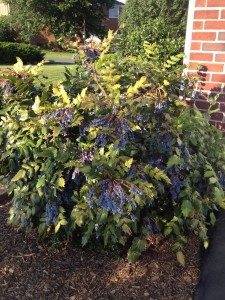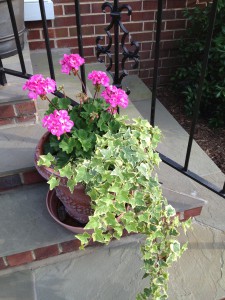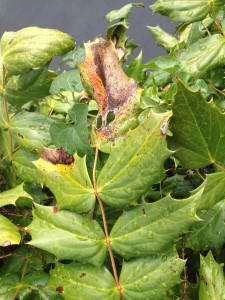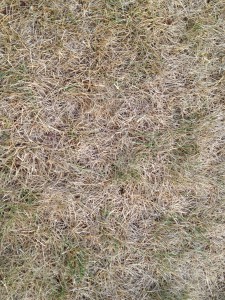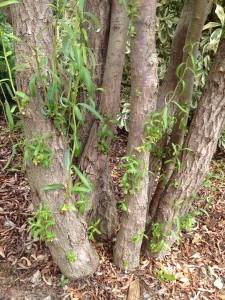It’s time for the Summer Olympics! Garden Olympics that is, and this summer had some clear winners despite the tough climate. There were gold medal winners in many categories – bushes, herbs, tropicals, vines, ground covers and annuals. I am going to show you what excelled this season in my garden.
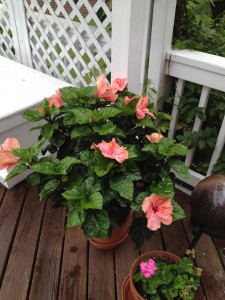
This mango colored hibiscus is a definite gold medal winner. It has had prolific blooms and foliage all summer.
In the tropical category, I give the gold medal to this beautiful mango colored hibiscus. It has maintained beautiful deep green glossy foliage, and has at least half a dozen flowers every day. There are so many varieties of hibiscus, both tropical and hardy, and a wide choice of colors to boot, it makes them a terrific choice wherever you want a splash of color. I find that mine do best when in the morning sun, with filtered shade in the afternoon.
Where bushes are concerned, it is hard to deny that the mahonia is quite amazing. It is also sometimes called a false grape because of the clusters that you see in the picture here. The display of “grape clusters” was beautiful in the early summer, and the striking contrast in texture that it provides to the foundation plants is beautiful in comparison to the small leaves of the boxwood and azalea bushes in the garden. One note of caution: they have very sharp leaves, so use gloves when working on them. In the early part of the year there are sprays of tiny yellow flowers which are scented like lily of the valley, and that alone might get my gold medal award. Other very noteworthy bushes were the knockout roses and the nandinas, both of which were exceptionally gorgeous this summer.
I give this year’s annual and ground cover awards to the geranium and variegated ivy. They have both done exceptionally well despite the fact that they are in the full sun and in a container. They remain my number one choice in a hot dry climate and are very showy even from a distance. This is the second year for these very hardy ivies. I have left them in the pot throughout the year, just changing out the flowers seasonally. The geraniums will be lifted out at the end of summer and stored in trays in the garage, where the temperature remains above freezing over the winter. I have used the same geraniums for many years, so they are also winners in the budget friendly category!
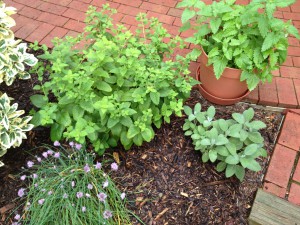
Some of the spectacular herbs this year, clockwise from top left: lemon balm, catnip, sage, and chives.
In the “edible” category I give the nod to the Catnip in my herb garden. I grow it each year in the same pot. It self seeds, so once you have it you never need to purchase it again. This year was a banner year, the leaves were huge, and were very much enjoyed by the kitties. I must also say that all the herbs in the garden both annual and perennial have been spectacular this season, but none as absolutely noteworthy as the Catnip.
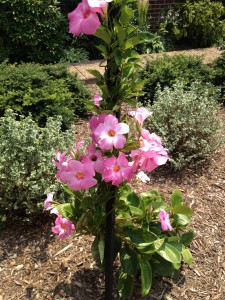
The beautiful mandevilla vine winds itself up the post, needs almost no care, and flowers in abundance!
Last but not least, the plant which drew the most compliments this summer was the mandevilla vine that I grew on a tall lantern post near the front walk. It was constantly covered in soft pink flowers, and twined itself around the lantern post with no human help. People walking by asked about it, and I did see many others being planted and thriving in my neighborhood. It’s always nice to have a carefree, reliable, beautifully flowering specimen to welcome you home. Let me know what deserved the gold medal in your garden this year, I’d love to hear!

